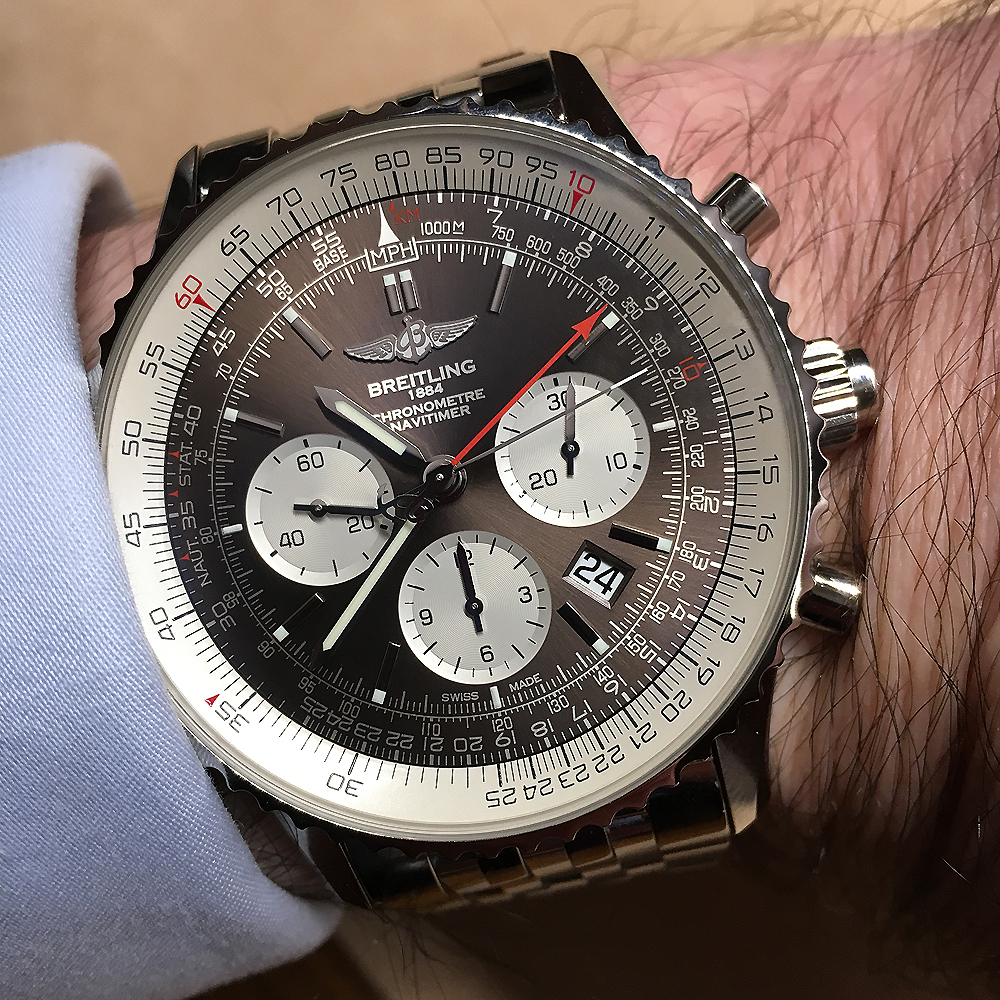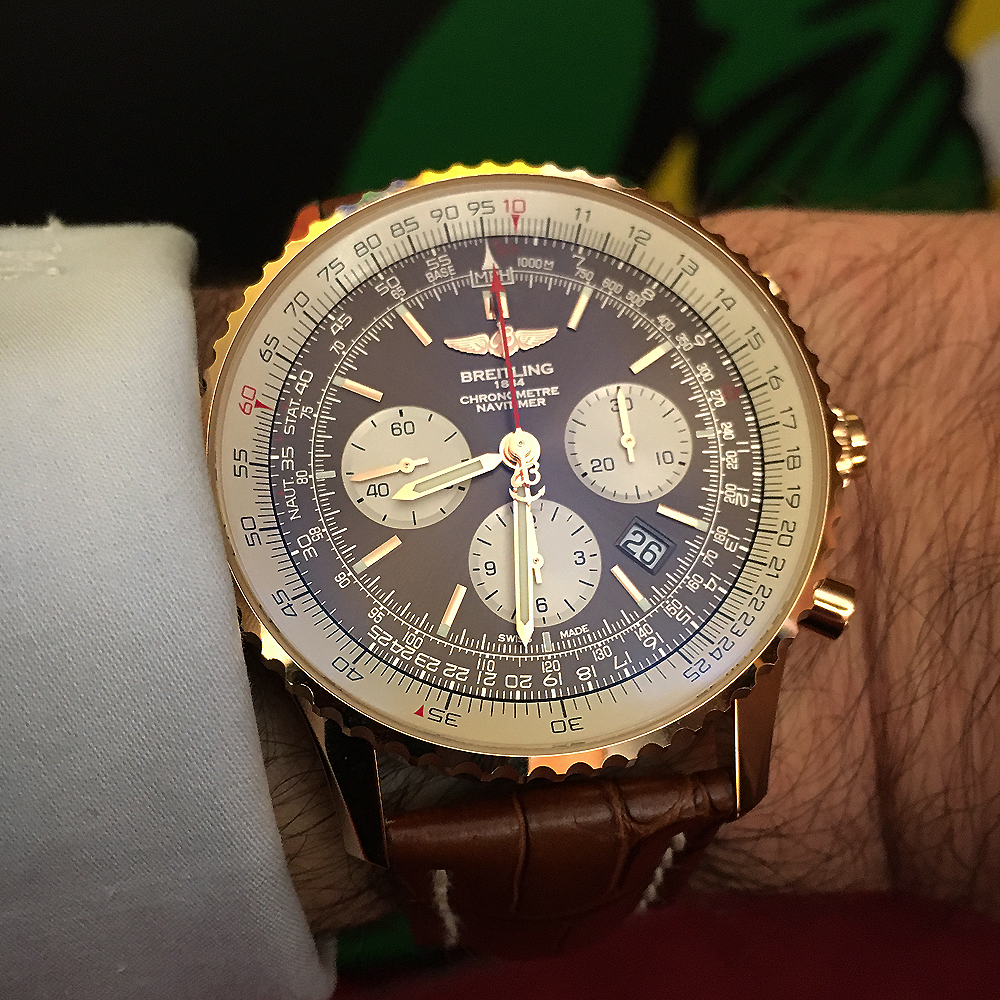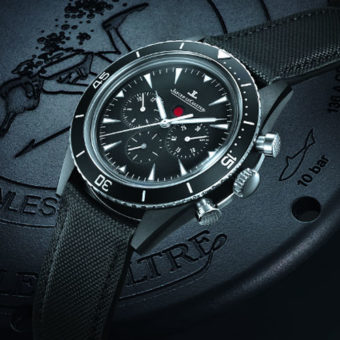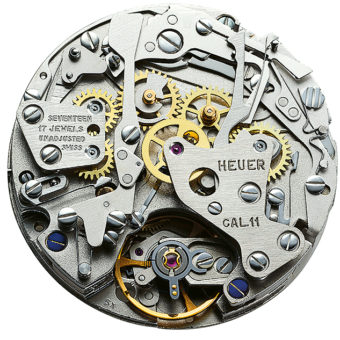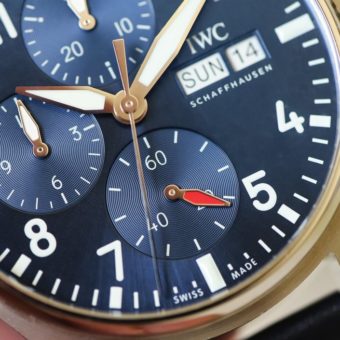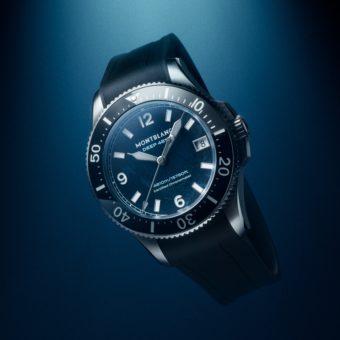Breitling pens the latest chapter in its prestigious history of aviation-inspired chronograph watches at Baselworld 2017 this week, with the launch of the new Navitimer Rattrapante, which features the brand’s first in-house-made, split-seconds chronograph movement.

The watch’s movement, Breitling Caliber B03, fittingly makes its debut inside the case of the Navitimer, one of Breitling’s most iconic models. It continues the company’s industry-influencing historical role in the field of mechanical chronographs, which includes such milestones as the first chronograph with an independent push-piece, in 1915; the first with a second independent push-piece, in 1934; one of the first self-winding chronograph movements, in the pivotal year of 1969; and the development of the classic Duograph in 1944, a highly collectible piece with an extra-thin split-seconds chrono movement, which could be considered this new model’s spiritual ancestor.

A split-seconds, or rattrapante, chronograph movement, is considered one of the most difficult horological complications to create, which explains why the few that are on the market are generally produced in small series. Breitling, however, in accordance with its 1940s slogan, “Quality in a series,” set out to build a movement that would be suitable for large-scale production — one that would be sturdy, precise, and reliable, while using a minimum of components to eliminate the usually lengthy adjustment process. Finding the solution to this complex problem took several years of research and testing.

The major challenge facing the movement developers involved the level of energy. The constant stopping and starting of the split-seconds hand results in variable energy requirements that can prove detrimental to chronometric precision and reduce a watch’s power reserve. Breitling approached this problem with the use of an isolating system that disconnects the split-seconds hand when it is stopped, an approach used in other rattrapante calibers. However, Breitling’s team also revisited the construction of the split-seconds mechanism itself, developing two technical innovations for which patents have been filed. The first relates to the isolating system: Breitling has replaced the cylindrical pin that traditionally drives the split-seconds lever — a component difficult to produce below a certain diameter — with a sturdier, more precisely defined stamped part. The addition of this piece to the isolating system ensures that the split-seconds hand has no impact on the precision of the timing, nor on the power reserve.
The second patent-pending innovation concerns the mechanism for stopping the split-seconds hand. Watchmakers traditionally use a wheel, either smooth or with extremely fine toothing, that is clamped in place. This system is complicated to produce and can lead to a certain degree of inaccuracy. Inspired by cycle brakes equipped with rubber pads, Breitling’s engineers came up with the idea of surrounding this wheel with an O-ring seal that would be compressed by the clamp. The results, according to Breitling, are extremely precise stopping of the hands and a system that is simpler to produce and thus more reliable.

Caliber B03’s modular architecture is built upon the base Caliber B01, Breitling’s first manufacture movement, which is equipped with automatic winding, date indication, an integrated 1/4-second chronograph function, and a 70-hour power reserve. The split-seconds module added to this high-performance horological engine is comprised of only 28 parts, and fitted between the mainplate and calendar mechanism — a construction that not only simplifies assembly but also maintenance: a watchmaker can remove the module as a single block for servicing and repairs. Like all Breitling movements, Caliber B03 is certified as a chronometer by COSC.

The 45-mm case of the Navitimer Rattrapante is available in either stainless steel or 18k rose gold; the latter version has a clear sapphire caseback and is limited to 250 pieces. The “Panamerican bronze” colored dial on both new versions is new and exclusive to Breitling, and serves as a contrasting backdrop to the three silver-toned subdials (30-minute chronograph counter at 3 o’clock, 12-hour chronograph counter at 6 o’clock, small seconds at 9 o’clock) and the silver-toned inner rotating bezel with circular slide rule, a useful tool for aviators that has been a fixture of Breitling Navitimers since the model’s debut in 1952.
Another element of the Navitimer and other Breitling chronographs — the central chrono seconds hand with the brand’s “anchor B” logo counterweight — makes a clever departure from the usual design here: the “B” is on the main red chronograph hand and the anchor is on the split-seconds hand. This means that the two logo elements are separated when the split seconds hand is stopped and reunited when the two hands are overlaid. The split-seconds pusher, which stops and restarts the split-seconds hand as often as desired during a timing operation, is ensconced in the 3 o’clock crown.
The Breitling Navitimer Rattrapante, which is available on a brown crocodile leather strap or rubber strap, will be priced at $11,090 in a steel case, and at $32,895 in gold. We had a chance to see and try on the watch at Baselworld. See below how both the strap and bracelet versions look on the wrist.
